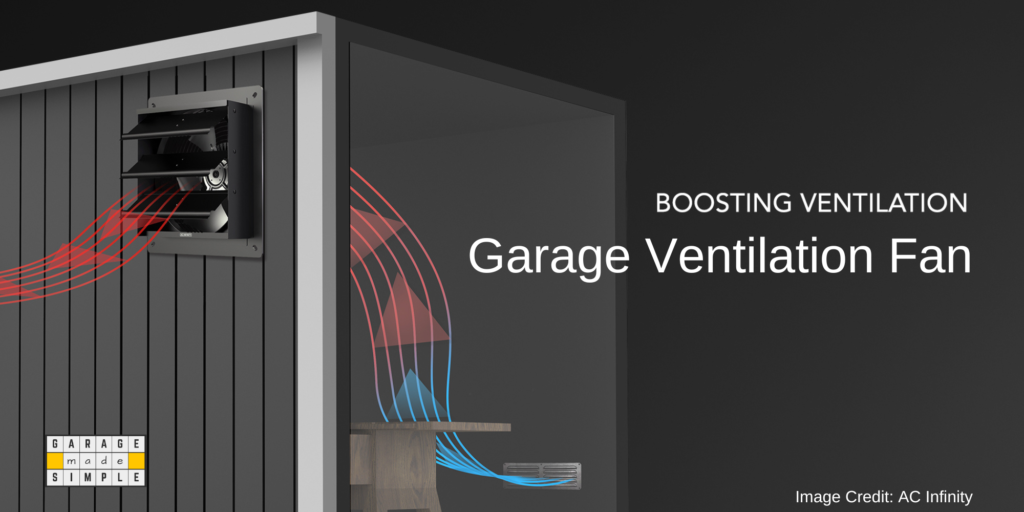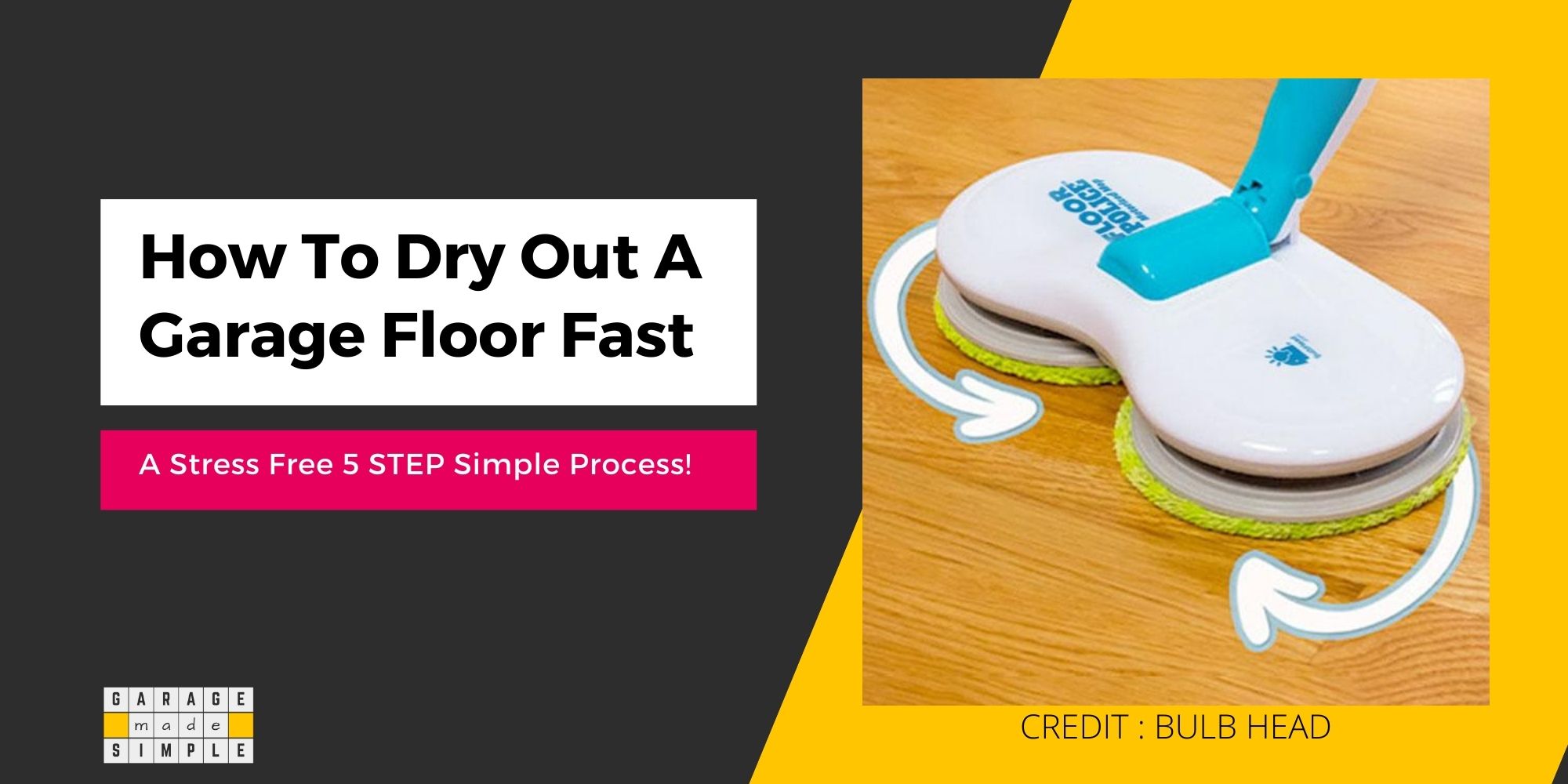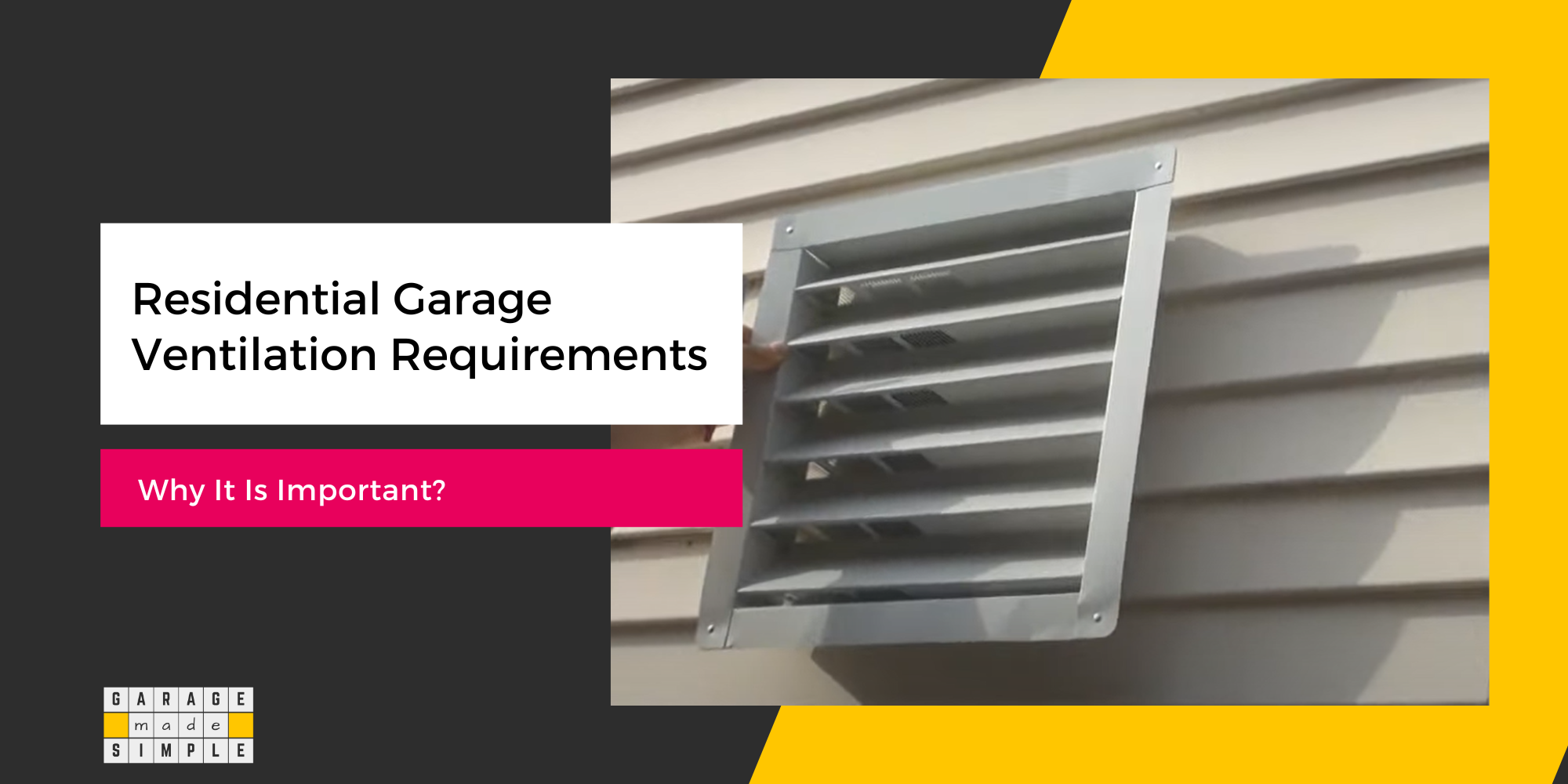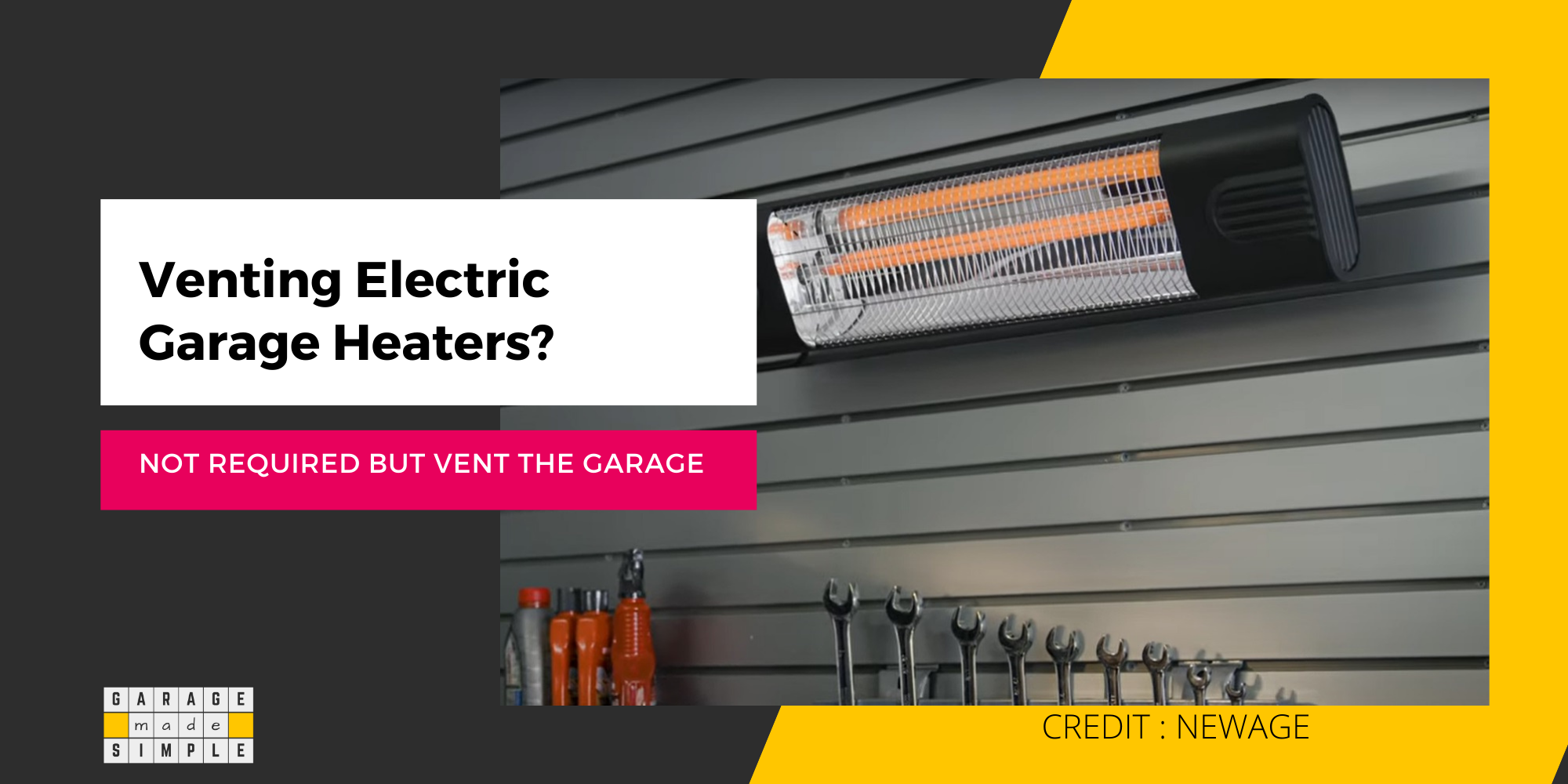Best Garage Ventilation Fan: A Buyer’s Guide [2024]
As an Amazon Associate, I earn from qualifying purchases.
A garage ventilation fan is your main defense against stifling heat and chemical smells in your garage on a sweltering summer day. Without adequate ventilation, your garage can become a hazardous & uncomfortable space.

During hot summers, a garage ventilation fan is not just a luxury—it’s a necessity. But a garage ventilation fan is quite helpful during winter too!
| Benefits in Summer | Benefits in Winter |
|---|---|
| Temperature Regulation: Exhaust fans expel hot air, other types circulate it to cool down the garage. | Condensation Prevention: Reduces moisture buildup, preventing condensation and ice formation on the garage floor. |
| Improved Air Quality: Removes harmful fumes, smoke, and VOCs. | Air Quality Maintenance: Expels harmful gases, smoke, and VOCs. |
| Moisture Control: Prevents mold and mildew growth by reducing moisture buildup. | Protection of Stored Items: Prevents cold spots and keeps humidity levels low throughout the garage. |
| Enhanced Comfort: Creates a pleasant space for projects, exercise, or recreation. | Structural Integrity: Prevents warm, moist air from damaging insulation and wood studs & joists. |
In this Buyer’s Guide, I take a comprehensive look at garage ventilation fans, detailing their types, benefits, and installation tips. I expect to equip you with the right information and help you choose the best garage ventilation fan.
Types of Garage Ventilation Fans
Exhaust Fans
Description:
As the name suggests, an exhaust fan draws out stale air, fumes, and moisture from the garage and expels them outside. They are typically installed high on walls or ceilings, often near dust, fume, or moisture sources, such as workbenches.
If you have opted to build a bathroom, mudroom, or laundry room within the garage, an exhaust fan is handy. It gets the moisture out fast and maintains humidity at optimum levels.
Pros:
- Highly effective at removing harmful fumes and excess moisture.
- It improves overall air quality and reduces the risk of mold and mildew.
Cons:
- It may require professional installation due to electrical and structural considerations.
- It can be noisy, when in operation, but you will get used to it.
Here are my top two picks when it comes to exhaust fans for a garage.
Best Garage Wall Exhaust Fan (With WiFi App)
AC Infinity AIRLIFT T14, Shutter Exhaust Fan 14″ with WiFi App
- High-airflow exhaust fan for heat, moisture, odor
- Dynamic temp/humidity programming with timers
- Remotely access via WiFi app for advanced control
- Steel shutters, aluminum blades, IP-44 liquid/dust resistant
- 14″ fan, 1513 CFM airflow, 68 dBA noise, dual ball bearings
Best Garage Attic Exhaust Fan (Solar Powered)
Solar Attic Fan, 35 W 14″, 1200 CFM Large Air Flow Solar Roof Vent Fan
- Reduces attic heat with a 40W solar panel
- Energy-efficient DC motor cools up to 1200 CFM
- Built-in thermostat auto-controls fan based on temp
- Weather-resistant, durable aluminum alloy design
- Flexible installation on roofs, gable vents, or extractors
Intake Fans
Description:
Unlike exhaust fans, intake fans draw fresh air from the outside into the garage to create a balanced airflow. They are typically installed on walls or doors opposite exhaust fans, but almost at floor level.
The combination of correctly installed intake and exhaust fan ensures that the garage is constantly supplied with fresh air while hot, humid, and stale air is expelled. This is great for garage air circulation, especially if the garage lacks natural ventilation.
An intake fan is essentially an exhaust fan that is installed close to the floor and the direction is reversed so that airflow is from outside to inside.
Pros:
- It helps in creating a balanced airflow by bringing in fresh air.
- Enhances the effectiveness of exhaust fans by ensuring a continuous supply of fresh air.
Cons:
- Not very effective when used alone.
- Requires proper placement and coordination with exhaust fans for optimal performance.
Best Exhaust Fan (That can be used as an Intake Fan)
Iliving ILG8SF16V-T Wall-Mount Shutter Exhaust Fan, 16″ – Variable Speed, Silver
- Reduces cooling costs with a wall-mounted fan
- Ideal for cooling attics, garages, and sheds
- 3-speed fan with built-in thermostat control
- Durable aluminum shutters resist moisture and heat
- Easy plug-in installation with included 6 ft cord
Wall-Mounted Fans
Description:
Wall-mounted fans are installed on garage walls to provide targeted airflow to specific areas. They work by circulating air within the space, helping to reduce heat buildup and improve ventilation.
These fans are typically installed at a height that allows for optimal air distribution without obstructing floor space.
Pros:
- Space-Saving: Wall-mounted fans free up valuable floor space, making them ideal for smaller garages or areas with limited space.
- Targeted Airflow: These fans can be directed to specific areas, providing focused cooling and ventilation where it’s needed most.
Cons:
- Fixed Positions: Once installed, wall-mounted fans can only cover a fixed area. However, they typically do have a horizontal swing function, so that they can cover a wider area.
- Installation: It is important to have a sturdy installation. This will require drilling and mounting. This is more involved when compared to portable fans.
Best Wall-Mounted Garage Fan (Powerful!)
Air King 9075 30-Inch Industrial Grade Oscillating Wall Mount Fan
- 30-Inch powder coated metal blade
- 3-speed, 1/3-horsepower, 120-volt motor
- Rear-mounted pull cord switch
- 10-foot, 3-conductor SJT type power cord
- ETL and OSHA compliant
- 1-year limited warranty
Floor Fans
Description:
Floor fans are portable units designed with a stand. As a result, they need not be mounted on a wall. This also makes them portable, as they can be placed anywhere on the garage floor.
A floor garage fan circulates air over a large area, helping reduce heat buildup and improve ventilation. These fans are typically used where temporary or adjustable airflow is needed, such as near workbenches or vehicles under repair or maintenance.
Pros:
- Portable: Floor fans can be easily moved around the garage to provide cooling and ventilation wherever needed. This makes them highly versatile for various tasks and setups.
- Plug & Play: Floor fans need no installation.
- Versatile: They can be used for multiple purposes, including drying paint, expelling fumes, and general cooling of the workspace. Their adjustable settings allow for customized airflow.
Cons:
- Takes Up Floor Space: Unlike wall-mounted or ceiling fans, floor fans occupy valuable floor space, which can be a drawback in smaller garages.
- Tripping Hazard: They may also pose a tripping hazard if not placed carefully.
- Noise: Some high-velocity floor fans can be noisy, which might be disruptive during prolonged use.
Best Floor Fan for a Garage (Can also be Wall-Mounted!)
Lasko High-Velocity Max Performance Floor Fan with Wall Mount Option
- 3 speeds for customizable airflow
- The pivoting head directs airflow as needed
- QuickMount for easy floor-to-wall conversion
- Durable metal fan with rubber-padded stand
- Simple assembly with included wall bracket
Would you like the added convenience of a remote control? Then check out the Lasko High-Velocity Fan with Remote Control for the Garage, Shop, Attic, etc.
Do you have a large garage and are looking for a floor fan that is heavy-duty, robust, and can move plenty of air at high velocity? Then Tornado Drum Fan is a great option for you!
Best Floor Drum Fan for a Garage (Heavy Duty)
Tornado – 24 Inch High-Velocity Heavy Duty Tilt Metal Drum Fan
- 24″ heavy-duty drum fan for large air volume
- Durable aluminum and powder-coated steel construction
- 8 ft power cord, 3-speed settings, 360° tilt
- Meets OSHA, UL507 standards; auto shut-off for overheating
- Easy to carry with handles; nonskid legs and rubber castors
- Quiet operation with advanced noise-reduction technology
Pedestal Fans
Description:
Pedestal fans are freestanding fans mounted on an adjustable pole, allowing for height customization. In other respects, they are not much different from floor or wall-mount fans.
Pedestal fans are preferable to floor fans if you need the airflow at human height. They are also superior to wall mount fans due to portability and adjustability of airflow direction.
As such, they are a preferred choice in garages, workshops, and other areas where flexible, directional airflow is needed.
Pros:
- Portable: Easy to move around, making them ideal for targeting specific areas.
- Versatile: Adjustable height and oscillation features provide customizable airflow.
Cons:
- Takes up floor space: Their freestanding design can occupy valuable floor space, which might be a drawback in smaller areas.
- Tripping Hazard: They may also pose a tripping hazard if not placed carefully.
Best Pedestal Fan for a Garage
Tornado 24 Inch High Velocity Oscillating Metal Pedestal Fan
- 24″ oscillating fan moves large air volume
- 6.6 ft power cord, ideal for industrial use
- Durable aluminum and steel construction
- 3-speed settings: 7600/6750/6050 CFM
- Adjustable height: 54.53 to 73.03 inches
Floor Blower / Dryer
Description:
Floor blowers, also known as air movers or dryers, are designed to provide a high volume of directed airflow to dry wet surfaces quickly.
They are commonly used in residential settings for drying carpets, floors, and even walls after cleaning or water damage. They are a lifesaver if your garage or basement floor has heavy condensation or gets flooded.
Pros:
- High Efficiency: Capable of drying large areas quickly, reducing the risk of mold and mildew growth.
- Versatility: Suitable for various surfaces including carpets, hardwood floors, tiles, and concrete or epoxy garage floors.
- Portability: Often lightweight and equipped with handles or wheels for easy transportation.
- Adjustable Settings: Multiple speed settings allow customized airflow based on the drying needs.
Cons:
- Noise Level: Can be quite loud, which might be disruptive in residential settings.
- Energy Consumption: High power usage can lead to increased electricity bills.
- Size: Larger models may take up significant storage space when not in use.
Best Floor Blower / Air Mover for a Garage
MOUNTO 3-Speed Air Mover 1HP 4000+ CFM Monster Floor Blower / Dryer
- High velocity 4000 CFM air mover with 3 speeds
- Heavy-duty roto-mold housing for commercial use
- Dries surfaces in 3 directions: 0°, 45°, 90°
- Durable, long-lasting design with 15 ft cord
- Portable, stackable for tight spaces
Garage Fan: Buyer’s Guide
To ensure that you buy the right garage fan that will give you the optimal performance while staying within your budget, you must consider the following:
Fan Strength (CFM)
CFM, or Cubic Feet per Minute, measures the volume of air a fan moves per minute. Of course, a higher CFM means better and more effective air circulation.
To choose the right CFM for your garage, calculate its volume (length x width x height) and select a fan that can exchange the air 6-8 times per hour.
Power Source and Safety
When setting up a fan, ensure it meets electrical requirements, typically 110/120V with a 3-prong plug. Please do not take any short cuts when it comes to electrical wiring. Consult or better still, use the services of a certified local electrician.
If using an extension cord, choose one rated for the fan’s power and avoid overloading circuits. Using an incompatible extension cord can pose several risks, such as overheating, power surges, electrical shocks, and fires.
Physical Size and Placement
Selecting the right size fan for your garage is important to ensure effective air circulation and ventilation. A fan, that’s too small won’t circulate air efficiently, while an oversized fan may be expensive, noisy, and too windy.
A garage fan can expel stale air, draw in fresh air, or move air around. For best ventilation, you may need more than one type. In any case, garage fan placement is important for optimal performance.
Avoid common placement mistakes like blocking airflow with obstructions, installing the fan too high or low, placing it too close to walls or corners, or ignoring the room’s layout.
Tilt and Oscillation Features
Adjustable tilt and oscillation features are important. You can enhance airflow by directing the breeze precisely where it’s needed. This flexibility ensures even air distribution throughout the garage, improving ventilation and overall comfort.
Noise Levels
Understanding Sones, a loudness unit, helps choose a quieter fan. Fans with lower sone ratings produce less noise. Selecting a low sone rating fan makes for a quieter environment, allowing for more comfortable and productive garage use.
The benefits of a low-noise garage fan are quite obvious. It enhances concentration and productivity. Reduced noise levels improve communication and help you pursue your hobbies peacefully.
Durability and Materials
Buying a fan that uses rust-resistant and sturdy materials ensures longevity and reliable performance, especially in humid and somewhat corrosive garage environments.
Regular maintenance, such as cleaning blades and checking for wear, helps extend the fan’s lifespan. Lubricating moving parts and inspecting electrical connections also contribute to sustained durability and efficiency.
Thermostat and Timer Settings
Automated temperature control through thermostats helps maintain a consistent and comfortable environment, in your garage, without manual adjustments.
Timers add convenience by allowing you to schedule fan operation, reducing energy consumption and costs by running the fan only when needed.
Are they essential? No. But they are nice to have if you do not mind the extra cost. This combination enhances both comfort and efficiency in your garage.
Thank you very much for reading the post. I do hope you found it informative and useful.














